It seems to be chanterelle season here at Curbstone Valley. For this ‘Mushroom Monday’ we bring you not one, but TWO, species of chanterelle mushrooms that are currently growing here.
Cantharellus californicus
Found growing just off the edge of a deer trail above the creek, we finally found our first Chanterelle mushroom of the season, Cantharellus californicus.
This chanterelle is commonly referred to as the Oak Chanterelle as it is typically found growing in association with Live Oak (Quercus agrifolia) and Tanbark Oak (Lithocarpus densiflora) between the San Francisco Bay Area, and Los Angeles.
Cantharellus californicus typically has a cream to yellow-colored convex cap between 5-30 cm broad, frequently becoming uplifted with an irregular wavy margin.
The under-surface consists of blunt, indistinct false gills running down the stem that become markedly cross-veined in maturity.

The false gills of Cantharellus californicus appear more as ridges than the true gills seen in agaric mushrooms
The flesh is quite thick, often waterlogged after heavy rains, and slimy to the touch. These mushrooms can become very large, weighing in excess of 1 kilogram each when wet! The stem length ranges from 3-10 cm in length, and 1-3 cm wide.
This species is often confused with Cantharellus formosus and Cantharellus cibarius, however it was recently determined by Arora and Dunham in 2008 that Cantharellus californicus is likely the only golden chanterelle species one is likely to encounter in Live Oak woodland here along the central coast of California.
Although this mushroom is a highly sought after edible species, it is reportedly not quite as flavorful as other chanterelles.
Craterellus cornucopioides
The second species of chanterelle growing here at the moment is a small colony of Black Chanterelles (Craterellus cornucopioides), also known as the Black Trumpet or Horn of Plenty. This cluster was found growing underneath some California Bay Laurel (Umbellularia californica) and Tanbark Oaks.
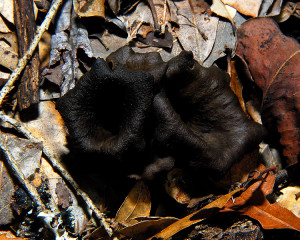
The Black Chanterelle (Craterellus cornucopioides) also known as the Black Trumpet, or the Horn of Plenty
The fruiting body of the Black Chanterelle averages 2-8 cm wide, and up to 10 cm tall, with a distinctly funnel-shaped undulate cap. Cap color ranges from dark grey to almost black when moist, but may appear brown when dry.
The dull coloration of these chanterelles provides excellent camouflage against the forest floor and can make them nearly impossible to find.
In the Pacific Northwest this mushroom is typically seen growing in small clusters of 3 to 4 mushrooms.
The under-surface of this mushroom is smooth, and the stem is not always apparent until the cluster is dug from the soil.
The black chanterelle is a highly prized edible species by mushroom collectors.
Despite finding two species of Chanterelles this week, as our weather is slowly becoming more spring-like we are seeing significantly less fungi on our hikes around the property. As such, barring any significant rainfall, we expect that over the next couple of weeks our ‘Mushroom Mondays’ will be drawing to a close for this season.

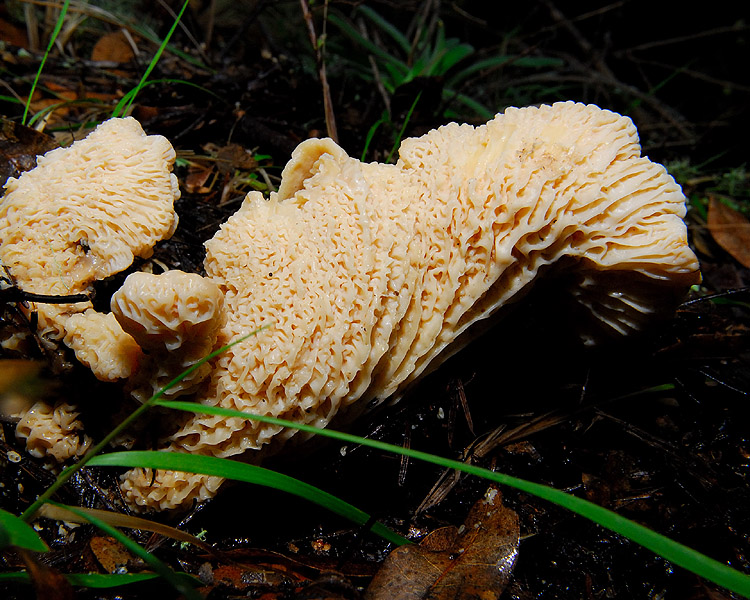

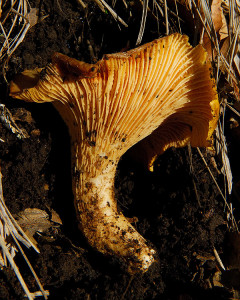

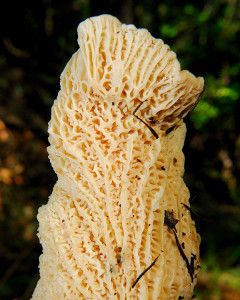
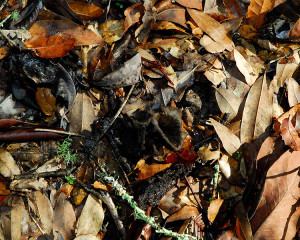
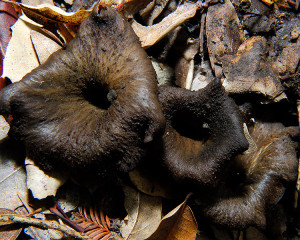
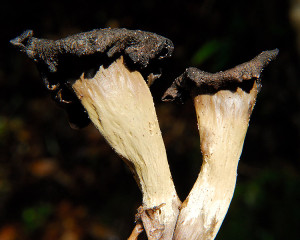







I have learned so much about mushrooms thanks to you. Chanterelles are so interesting and beautiful.
Yum,
Black trumpets. Found about 10 pounds of them the week before Hurricane Fran, to damp to dry them and no electric to freeze them. Sad to see them go to waste. Now where we found them is a subdivision.
Beautiful photos of the mushrooms. Now I am craving wild mushroom soup…mmmm! 🙂
I so wish I could find some of these edibles with your expertise. Nonetheless, as the series draws to a close with the onset of your dry season, I must say that I’ve thoroughly enjoyed Mushroom Mondays and hope you continue next time they’re around. Bravo!
I had no idea there were multiple types of chanterelles. I’ve only ever seen Cantharellus californicus. I’ve heard that one is delicious, so the others must be amazing.
Dear CV, This is another very informative and interesting posting on a subject about which I previously knew very little if anything at all.
Your photographs are of exceptional quality and do much to support your text.
I love Chanterelles, they are absolutely my favorite mushroom (to eat anyway) I grew up eating these, as my dad had (and still does) a special place out in the woods a few miles from our home, where every season he would head off and come home with a big bag of Chanterelles. He has tried over the years to get them to grow in our own woods, but unfortunately, with out success.
These are coming up everywhere, where I live… they are gorgeous!
I just went out with Denise and Kevin and found my first californicus. It was pretty cool. The day turned out horrible, but the ‘shrooms were great. Now I just have to eat them.
Yes, yes, but were they absolutely delicious?! Hopefully our current storm will give Mushroom Monday a reprieve. I’d hate for it to go away!